Hello world and welcome to my project About the Middle Ages. I hope you like it!
Introduction.
For our innovation day project, we are supposed to make a castle with a working draw bridge and other stuff.
It is actually pretty cool we are studying about medieval times and I hope you will like this blog.
What are the Middle Ages, you ask? I’m glad you asked! “Even though you probably didn’t…”
They are a long period that took place between 400-1400AD approximately
It also began when the Roman Empire collapsed In the 400’s.
Some people refer to the period following its collapse as the Dark Ages, believing that society declined during this time.
Here is a video about medieval times
Feudalism
During the Middle Ages, the Roman Empire was divided into a bunch of small kingdoms.
Most kings did not have much control over those kingdoms.
Because of that many princes, dukes, and counts ruled their own land.
Those people were called vassals and their land was called fiefs.
They kind of acted like kings through this thing called feudalism or the feudal system.
The feudal system made a class system made of three groups.
1 The ruling class governed the peasants.
2 The peasants or serfs worked the land.
3 The church leaders or clergy were in charge of the religious life of the community.
Here is a video about the feudal system.
Castles.
Some people think that castles serve as homes for powerful people. Even though it is true it is not totally true.
Castles are communities made up of a lot of people.
Some are rich and wealthy like castle owners and nobles.
Others were not rich and wealthy like farmers religious, leaders, etc.
Castles played an important role in feudalism in Europe in the Middle Ages.
the word castle is from Latin. In Latin It means fortress.
A castle also houses their army, weapons, and food.
Castles are the center of the government. Even though they got attacked a lot they were the safest place during that time.
Pulleys.
Did you know that draw bridges in castles are built with a pulley system?
Well, they are!
The rope attached to the pulley is also attached to the draw bridge in a castles
There are two main types of pulleys.
a fixed pulley and a movable pulley.
A fixed pulley is a pulley that is attached to a structure.
It can’t move parallel to the structure.
A movable pulley can change position relative to the structure.
A pulley system is when you combine two or more pulleys together.
Gears
Gears are great inventions created by Greeks. They have been used for centuries in many applications, including flag poles, cars, clocks, and bicycles.
Gears are even used in castles for things like flagpoles, as I mentioned earlier. But there are even more things in castles with gears for example wells.
Hypothesis
I think I am gonna use the pulley to make the drawbridge work. I will position it at the top of where the door/drawbridge is. Pulleys work when the rope is pulled it will lift the load. In this situation, the drawbridge is the load.
I was going to use gears to make a flagpole but could not find how to make a working flagpole with gears on the internet, so I just made a tower and taped a flag at the top.
Procedure
1 Get a cardboard box
2 Cut a hole in it in the shape of a drawbridge
3 Put a pulley above the hole you made earlier
4 Add spikes on the top.
5 Make turrets.
6 Make a tower.
7 Attach a string to the pulley and drawbridge from earlier.
8 Add a flag to the tower
Now it should look somewhat like this
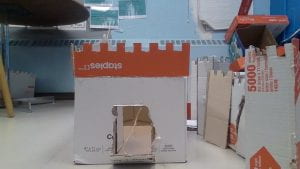
And this
Drawbridges.
A draw bridge is a historical type of bridge from the Medival Times. It can be moved in different ways and has many uses.
A lot of drawbridges were built as part of castles over moats. Nowadays, modern drawbridges are built across various. bodies of water, so it could be lifted manually if a boat is going under it and lowered to allow cars to pass.
Medieval castles were often surrounded by a moat or ditch crossed by a wooden bridge for protection. Some earlier castles had a bridge designed to be destroyed during an attack, but drawbridge became more common.
The bridge would be raised and lowered using ropes and chains attached to a windlass?!?!? in a chamber in the gatehouse. Only a light bridge could be raised without any counterweight so a form of bascule?!?! is normally found. the bridge could extend into the passage beyond the pivot point?!?! WHAT ARE THESE WORDS! either above a pit or in the form of counterweight beams that drop onto the floor.
The chains themselves could be attached to counterweights. in some cases a ?portcullis? provides the weight. by the 20th century a bascule? the arrangement was provided by lifting arms (gaffs) above and opposite to a bridge deck which ends were stuck together by chains to the ‘lifting end’ of the bridge; in the raised position the ‘gaffs’ would fit into slots in the gatehouse wall “trainers” which can still be seen at some castles.
Inspiration
My castle was inspired by this.
It is the Highclere castle located in England built in 1679 and renovated in 1840 aproxmetly
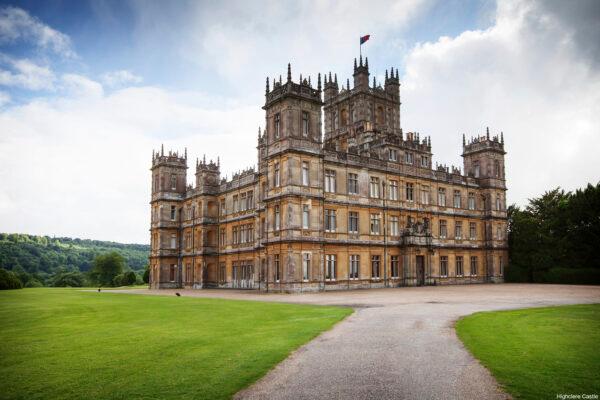
Design
This is where I put my design.
sorry if it’s blurry
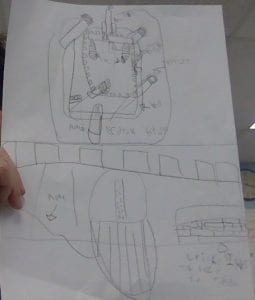
Build pics
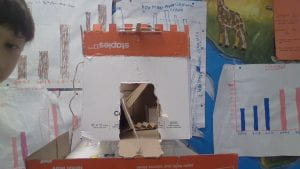
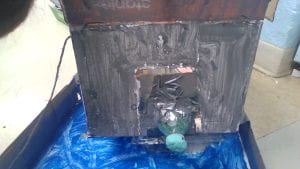
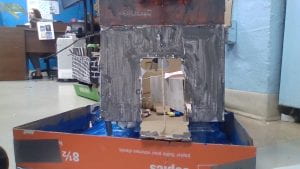
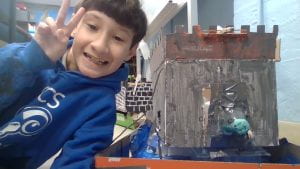
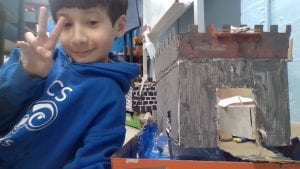
Final result video
This is my final results video of the final product in my castle
Reflection
In this paragraph, I am supposed to ask myself WWW What Went Well and EBI Even Better If. What went well was almost everything. It was really fun experimenting and it was the first time I got to use hot glue. I made a working drawbridge, a moat and much, much more! Even Better If. I could of added a working flagpole but I could not find how to do so on the internet, so instead I made a tower and put a flag at the top.
Rubric
here i self grade myself
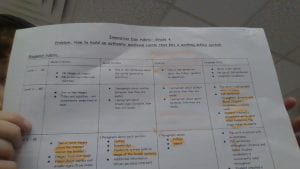
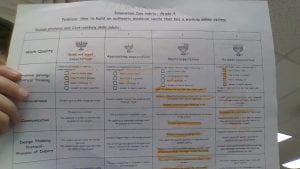
Bibliography.
1 grammerly lol.
2 me.